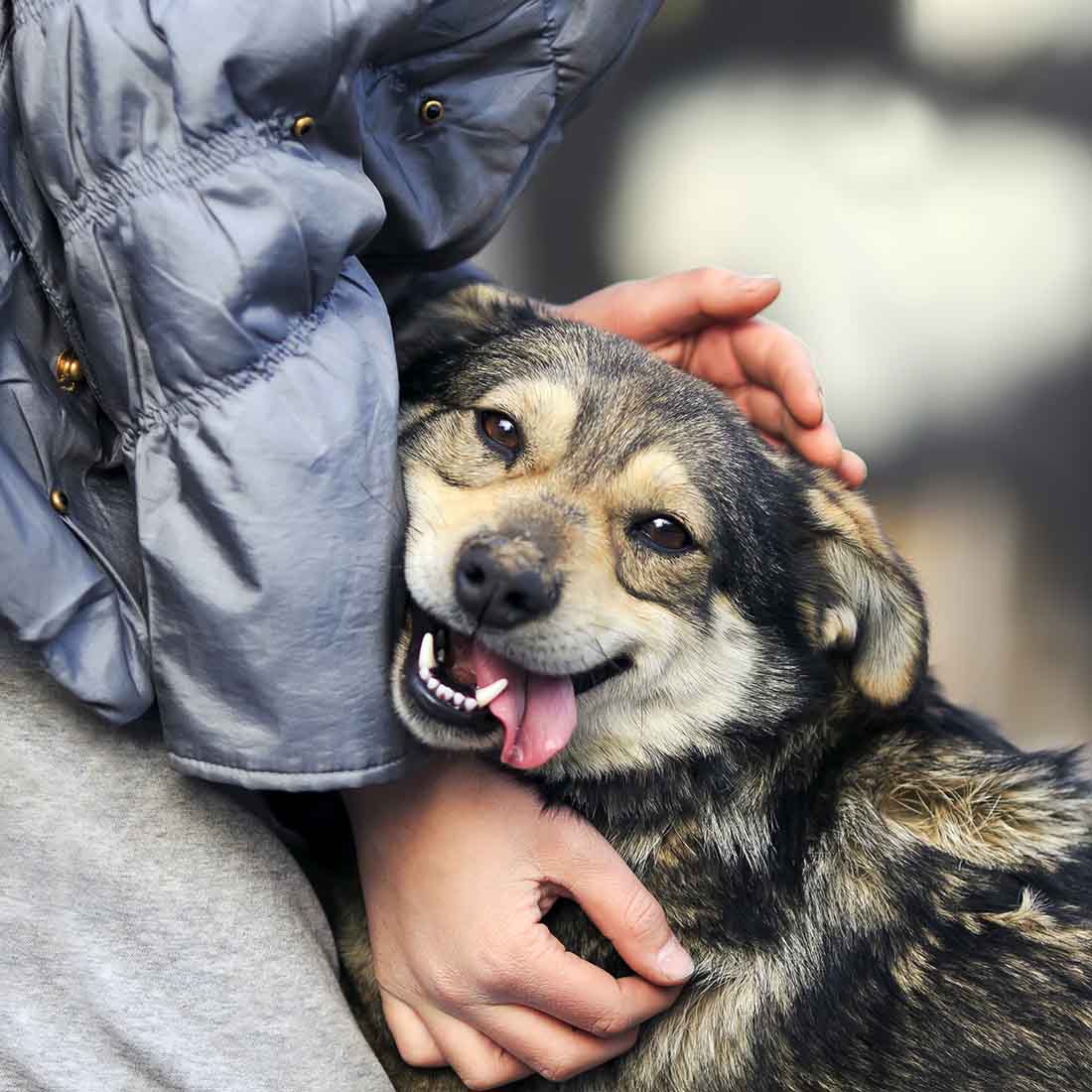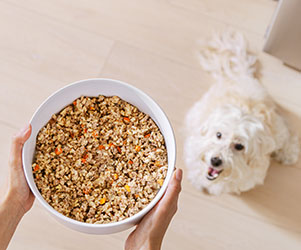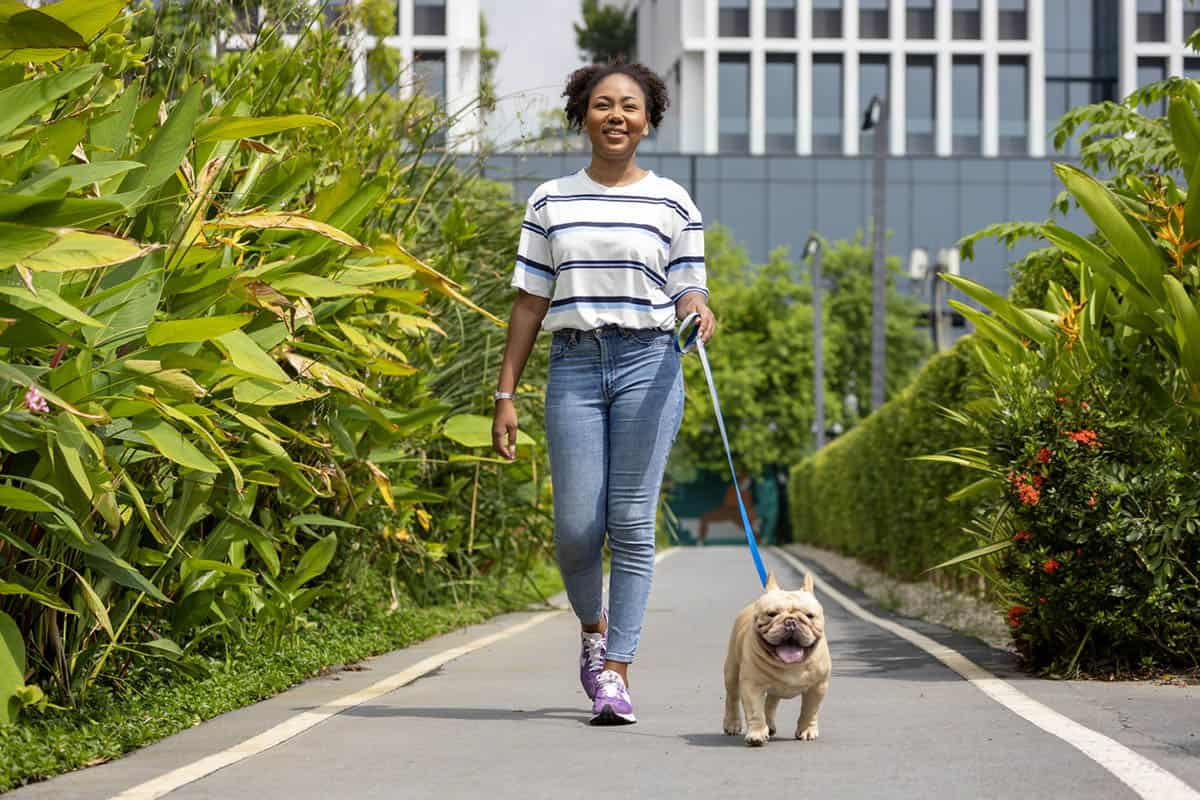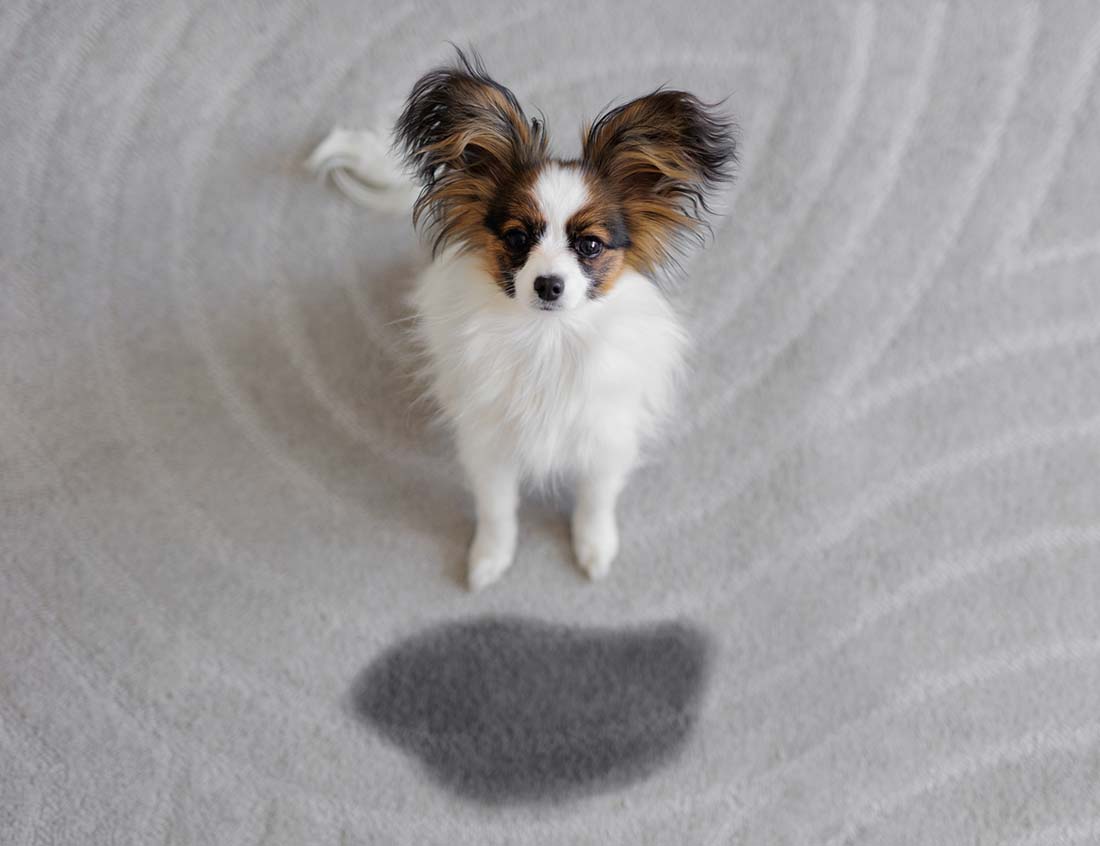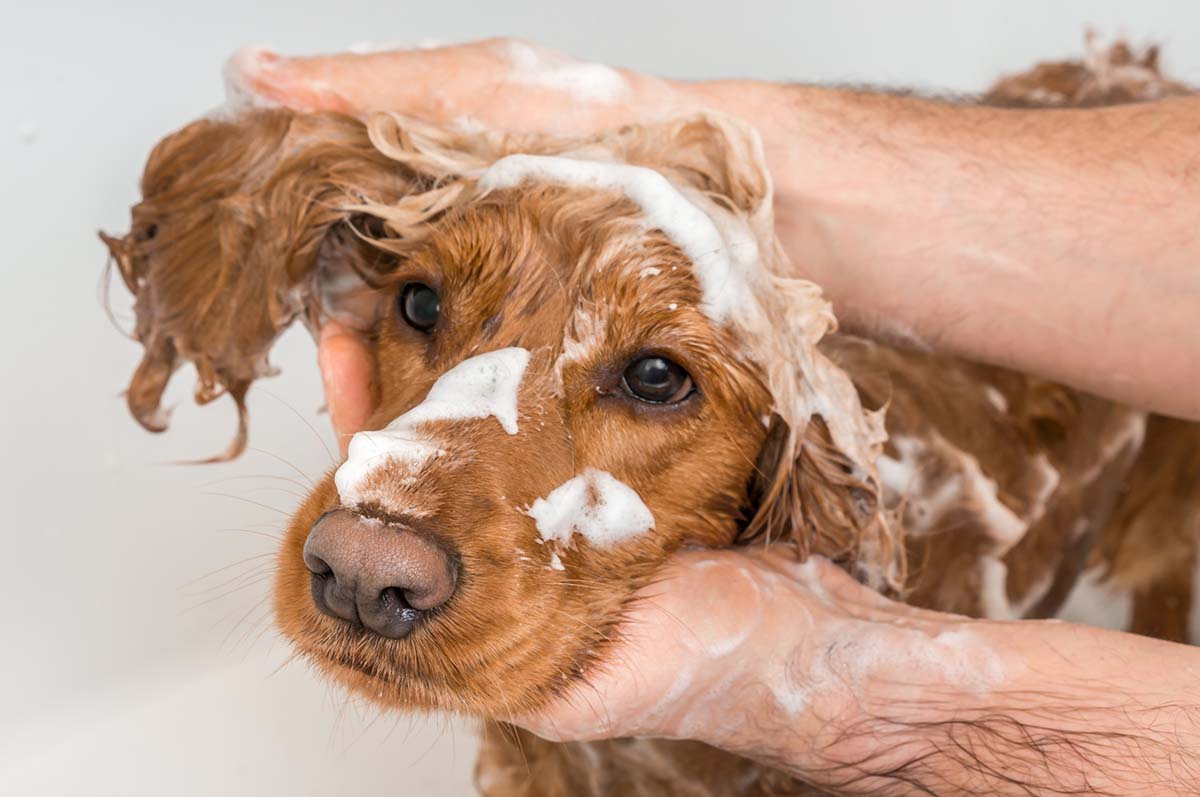Why Is My Dog So Clingy
If your pooch clings to you so much and you’re starting to feel a little smothered, you may have a velcro dog. Here's why and how dogs can become clingy to their humans.
Does your dog follow you everywhere? Does he fix you with his loving gaze no matter what you’re doing? If your pooch clings to you so much and you’re starting to feel a little smothered, you may have a velcro dog.
Such clingy behavior can be typical in some dog breeds. Clinginess might also stem from anxiety or health issues. After all, if you’ve adopted a new dog, you have no idea what their previous life experience was like. But what if your canine companion becomes clingy? Should you worry?
Let’s explore the various guises of clingy dog behavior, what causes it, and how you can help your dog feel comfortable.
What’s a Velcro Dog?
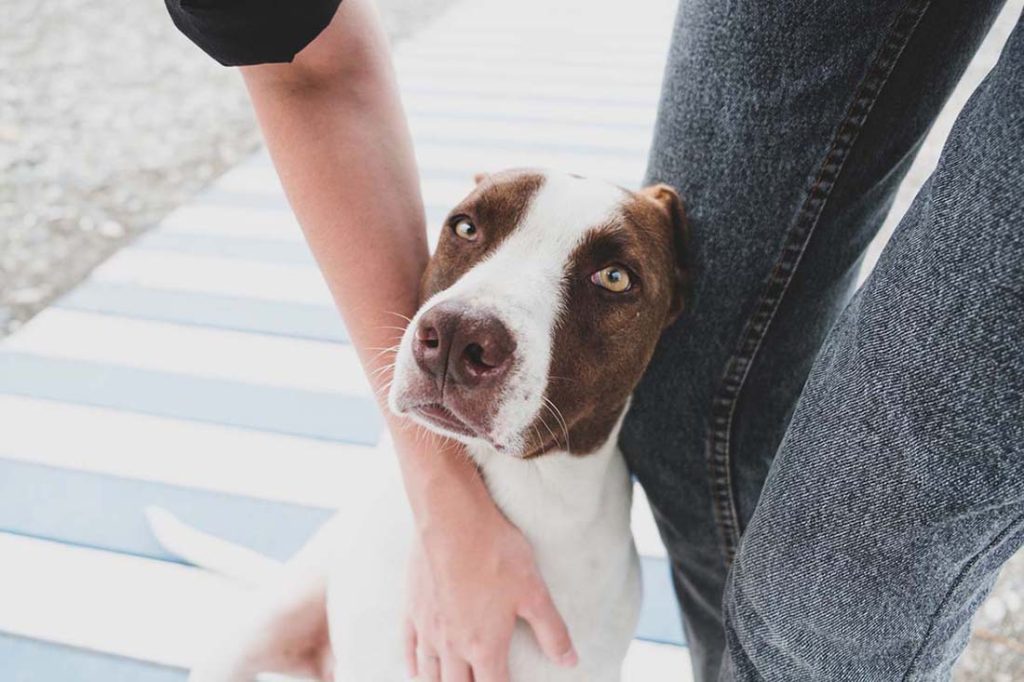
A so-called Velcro dog often presses against you and won’t let you out of his sight. He follows you across the room and sticks to you—err….like Velcro. Just like you’re not shaking off your Velcro shoe straps, your Velcro pup is going nowhere without you.
You cross the room, your doggie gets up and follows you. You go to the bathroom, and you have a companion.
Clingy dog behavior can be sweet at first. But it doesn’t take long before you’re ready for your canine companion to show some independence and give you some space. Clinginess isn’t necessarily the same as separation anxiety, either. As you’ll soon see, those are two different behaviors.
What causes doggie clingy behavior? It turns out there are many common reasons for a dog’s clinginess. From genetic traits to anxiety, some dogs are naturally clingy, and others develop it later in life.
Common Reasons for Clingy Dogs
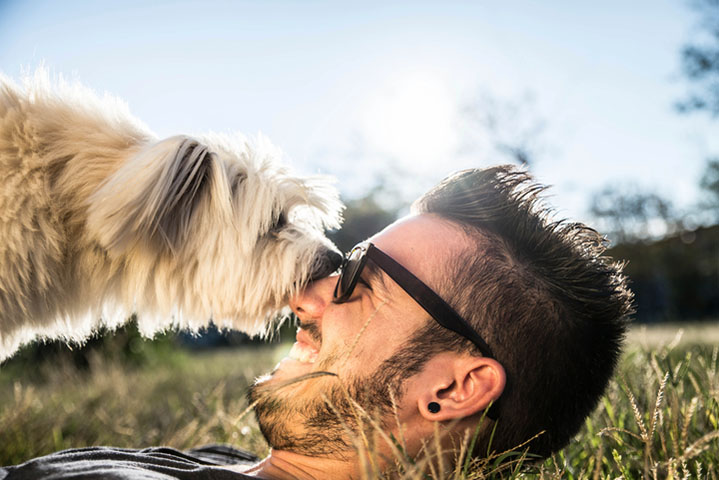
Dr. Carlo Siracusa is a Veterinary Behavior Specialist and Associate Professor of Clinical Animal Behavior and Welfare at the University of Pennsylvania. He attributes clingy dog behavior to two factors: “the highly social behavior of the domestic dog, and its attachment to people.”
Since our doggie friends are pack animals, they’re social creatures. Group living is in their DNA, going back to their wolf ancestors. So, naturally, they want to be with their people. Intertwined with their natural socialness, we’ve domesticated our doggie friends so much that they depend on us.
Dr. Siracusa says studies show dogs often rely on humans to solve problems. “Because domestic dogs live in a human-centered environment, they do not have a good control of their environment and rely on humans for their basic needs like eating or eliminating. This makes a caregiver a “secure base” for the dog. In the presence of the secure base, a dog feels safe.”
I think you’ll agree this combination of DNA and learned reliance makes sense. Yet, all dogs aren’t clingy, so what gives? Is it possible you’ve encouraged your dog to be clingy by rewarding their behavior? Could your dog be stressed or anxious by sudden changes in his environment?
Maybe you’re not sure. Let’s explore common reasons for clingy behavior and how you can reinforce your doggie bond.
4 Common Reasons for a Dog’s Clingy Behavior
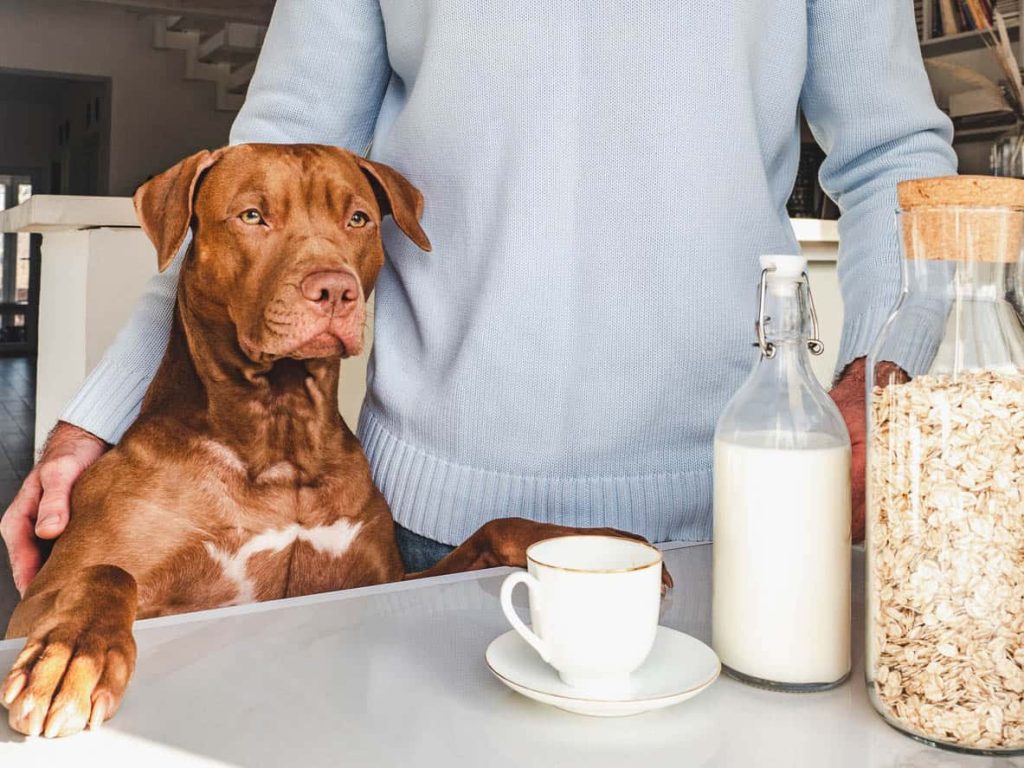
While any dog could exhibit clingy behavior, there are a few typical signs you, as a pet parent, can ask yourself about your dog.
Dog Breed
Certain dog breeds are known for clingy behavior. For example, Viszlas are a top contender for the role of Chief Velcro Dog. Originally bred as hunting dogs, they’re accustomed to human companionship.
Then you have Golden retrievers who never want to miss out on the fun, so they might lie on a dog bed and watch you closely.
Lapdogs like the Maltese, King Charles Cavelier Spaniel, and the Italian Greyhound can be clingy. Yes, the Italian Greyhound is a little large for a lapdog at around fifteen pounds, but if you’ve met one, you know they want to be in their person’s lap.
Even German shepherds can be clingy. However, they’re also smart and want to protect their people, making them good police dogs.
Dog breed aside, many people reinforce their pup’s clingy behavior without realizing it.
Reinforcement
Our dogs learn through reinforcement. So, if you scratch your pup’s ears, slip him a treat, or praise him every time he snuggles up next to you, you reinforce the behavior.
Of course, you want to give your canine companion attention. Cuddling and playing with your dog is part of the fun of having a dog, but when it morphs from fun into a need for constant attention, it gets tricky. It can be disruptive if your dog is always there, nudging your hand for a pet while you’re on work calls or barking at you to play.
Could you’ve fallen into the trap of positively reinforcing such behavior? It happens. Fortunately, there are ways you can redirect your dog’s behavior with more exercise and interactive toys. It’s also possible your dog is anxious.
Anxious
Many dogs are clingy or become clingy due to anxiety. If you have a new dog, it may take time for them to settle into your home and routine. Be calm, and patient, and establish a daily routine.
Dogs love a routine. Because your dog relies on you for everything, knowing when they’ll go out and when they’ll eat helps them feel safe and secure. Sudden changes in the routine can upset your pooch.
Have any of these occurred recently in your home?
- New pet
- New baby
- New home
- Construction
- New noises
- New routine
If you’re nodding at any of these, you might find yourself with a clingy dog until they adjust. Depending on the situation, you can find ways to offer your dog more mental stimulation or positive reinforcement. For example, if you have workers in your house who’d like to engage with your dog, you could invite them to offer your dog a treat or even a calming supplement. When tasty things come from strangers, it helps your dog relax. Of course, this is only possible if your dog is usually friendly and accepting.
With other changes in the routine, you can try similar positive reinforcement or work with a dog trainer on ways to soothe your dog.
Age
Your dog’s age can impact their clinginess, too.
If you’ve adopted a puppy, your new family member is adjusting to a new home, new routine, and new people. Puppies are always curious and don’t want to miss out on anything. Your new pup will likely adjust and gain independence as you establish a routine and positive training.
Older dogs might become clingy if they’re facing health issues. Dr. Siracusa says, “Aging comes with physical and cognitive decline, often making dogs more insecure and even more attached to their secure base, i.e., their caregiver. Dogs with a history of separation anxiety at a younger age can relapse when they get older, and we see many of them.”
If you suspect your dog may have a health issue, please make an appointment with your veterinarian to rule out any possibilities. A dog trainer or animal behaviorist can also help you train and redirect clingy behavior.
Related to dog clinginess but different is separation anxiety.
The Difference Between a Clingy Dog and Separation Anxiety
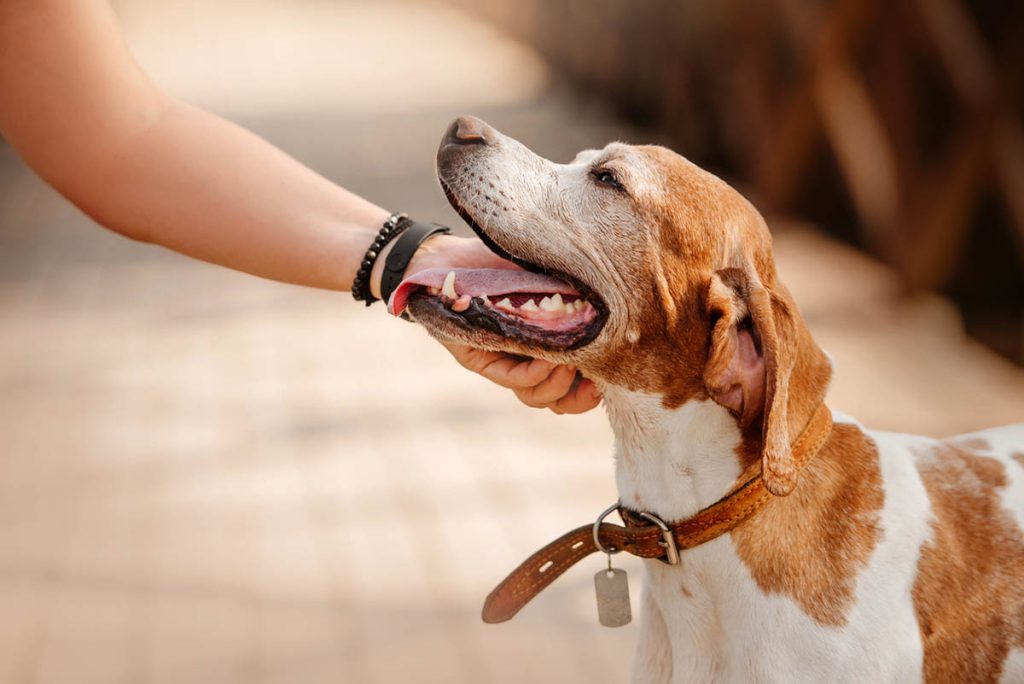
Dr. Siracusa says, “Clingy behavior is typically called “hyper attachment” (HA) in the behavior science community.”
Such dogs follow their caregivers around and often seek attention. Dr. Siracusa says, “The dogs often seek an active interaction called attention-seeking behavior.”
If your dog constantly wants you to play fetch or cuddle them, that’s a typical sign of attention-seeking behavior.
However, attention-seeking is not the same thing as separation anxiety.
Dr. Siracusa says, “Separation anxiety (SA) refers to the distress and fear that a dog shows in the absence of the caregiver. The most frequent complaints related to separation anxiety are excessive vocalization, like loud barking or whining, destruction (of furniture and objects), and inappropriate elimination (urinating and defecating) in the house.”
He says that some dogs can show signs of HA or clinginess and not have separation anxiety and vice versa.
If your clingy dog seems fine when you’re gone, but you routinely come home to destructive behavior or neighbors complain about nuisance barking, those are signs of separation anxiety.
In separation anxiety and clinginess, animal behaviorists recommend additional exercise and mental stimulation. For pups with separation anxiety, crate training can give your dog a safe space of his own and protect your home.
You Can Help Your Dog Be Less Clingy
Bored dogs can become clingy or destructive. Imagine if you had no work or internet and relied on another person to feed you, walk you, and play with you. You might get clingy, too!
More exercise can help your pooch burn off excess energy. Puzzle toys give your dog something to problem-solve.
Dog owners should give their dogs a stable routine with plenty of exercise, socialization, and training. These boost your dog’s confidence so they feel comfortable in all situations. You can enlist the aid of a dog trainer to help.
Hopefully, this article sparks an idea or two about why your best friend is clingy and how you can help your dog feel more comfortable and happy.
